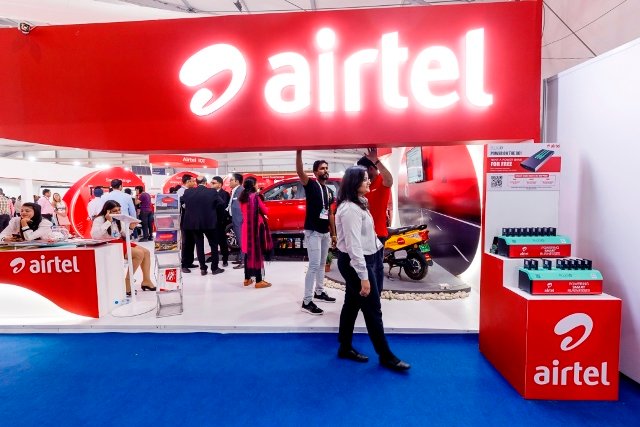Fitch Ratings has revised the outlook on India-based Bharti Airtel’s Long-Term Foreign-Currency (FC) Issuer Default Rating (IDR) to Negative from Stable, and affirmed the IDR at BBB-.
 Fitch has also affirmed Airtel’s senior unsecured rating and Bharti Airtel International (Netherlands) BV’s senior unsecured guaranteed bonds at BBB-, and Network i2i’s subordinated perpetual bond’s rating at BB.
Fitch has also affirmed Airtel’s senior unsecured rating and Bharti Airtel International (Netherlands) BV’s senior unsecured guaranteed bonds at BBB-, and Network i2i’s subordinated perpetual bond’s rating at BB.
The change in the outlook does not indicate a change in our view of Airtel’s underlying credit profile, but reflects the heightened probability that India’s Country Ceiling could be lowered to BB+ – which would then constrain Airtel’s FC IDR and senior issue ratings, Fitch Ratings said.
Airtel’s financial year ending March 2021 (FY21) funds from operations (FFO) net leverage will remain stable at 2.0x-2.2x (FY20: 2.1x) – excluding the deferred spectrum liability of $5.8 billion – below the threshold of 2.5x above which we will take negative rating action. Management is committed to an investment-grade rating and raised about $7.6 billion in equity in aggregate in the last two years.
Airtel’s FY21 revenue and EBITDA growth will remain robust at around 10 percent-15 percent, driven by improvement in the Indian wireless market and continued strong growth in African markets, despite the effect of the coronavirus pandemic. However, the growth will be slower than our previous expectations of 20 percent-22 percent, due to lower data growth and weaker economic activity amid the pandemic in India and Africa.
Airtel’s Indian mobile segment revenue will rise by at least 15 percent-20 percent on higher tariffs amid easing of competition, as the industry’s revenue market share increasingly consolidates with Bharti and Reliance Jio.
Airtel’s 4QFY20 Indian mobile segment revenue and EBITDA rose by 16 percent and 27 percent qoq, respectively, led by 14 percent growth in monthly ARPU to INR154 (USD2.1), 10 percent growth in the 4G customer base to 136 million, and 8 percent growth each in monthly data usage per user to 15GB and voice usage to 965 minutes.
Airtel’s management is confident that the Covid-19 pandemic will have limited impact on FY21 EBITDA growth, which it forecasts to be at least 25 percent (FY20: 25 percent). Management says that data growth has increased by 20 percent-25 percent in the short term, as users work from home and upgrade to plans with higher ARPU.
There is a dispute over the amount of adjusted gross revenue (AGR) dues that Airtel is required to pay to the Department of Telecommunications (DOT). Airtel has paid $2.6 billion (INR180 billion) to date, compared with DoT’s original demand of $4.9 billion. Management assesses the amount should be $1.9 billion, and believes the extra $714 million it paid will be sufficient to cover any potential dispute on the calculation of the dues.
Fitch assumes the balance demand of $2.3 billion to be paid in its FY21 leverage estimates.
The Supreme Court’s ruling in October 2019 led the DoT to demand large unpaid dues on licence fees and spectrum-usage charges from Indian telecoms. The DoT demand relates to a 14-year-old dispute regarding the definition of AGR, which the Supreme Court ruled should include all income generated by the telecoms.
Airtel is expected to generate small positive free cash flow in FY21, excluding the one-time payment for spectrum potentially to be auctioned in FY21, as Capex / revenue is likely to decline to around 22 percent-25 percent (FY20: 26 percent) on lower core Capex, interest costs and the government’s two-year moratorium on the payment of existing spectrum dues. The moratorium will defer about $840 million in each of FY21 and FY22. Airtel has almost completed the shutdown of its 3G network across India and has redirected its 900MHz and 2100MHz spectrum for 4G usage.
Airtel’s African revenue and EBITDA is expected to rise by a high single-digit percentage on a constant currency basis in FY21, driven by mobile data and mobile money. Airtel’s strong growth is supported by its market position as the largest or second-largest mobile operator in 11 of its 14 African markets. FY20 revenue and EBITDA rose by 11 percent and 14 percent, respectively, on a reported currency basis, driven by a 12 percent rise in subscribers to 111 million, 3 percent growth in ARPU to $2.80.





